Fizzy Color Mixing Experiment
Happy birthday Dr. Seuss! Are you celebrating Read Across America Day today? I’ve got a Dr. Seuss inspired kitchen science idea for you. Kids of all ages (toddlers and up) will love our fizzy color mixing experiment. It’s super easy to set up and can entertain for for quite a while. Affiliate links are included in this post.
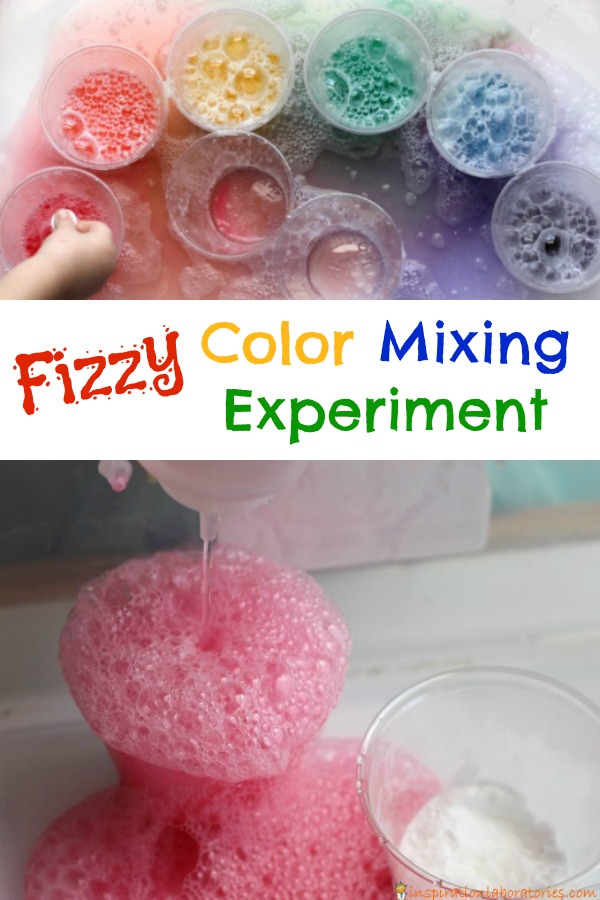
My Many Colored Days by Dr. Seuss
While Dr. Seuss’s books are full of color, My Many Colored Days was actually illustrated by two other people. Steve Johnson and Lou Fancher bring the emotions described by Seuss to life with their bright, expressive paintings. Use this book to learn about colors and discuss feelings.
Fizzy Color Mixing Experiment
My kids love a good kitchen science experiment. Their favorite thing to explore is baking soda and vinegar. I set up the fizzy color mixing experiment for them to explore what happens when you mix different colors.
I started by adding washable liquid watercolors to each cup. (You can also use food coloring, but be warned that food coloring has the potential to stain clothes and surfaces.) I have red, yellow, and blue liquid watercolors. I talked to Aiden and Lily about what colors I needed to add to get the rest of the rainbow.
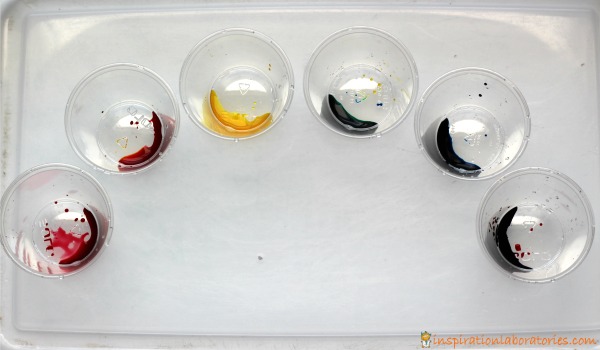
I placed the cups in a large plastic storage bin. You might also want to cover your work surface or place towels down. My kids tend to spill a little so we do this activity on the kitchen floor. Cover the liquid watercolors with a layer of baking soda. I used 1-2 tablespoons.
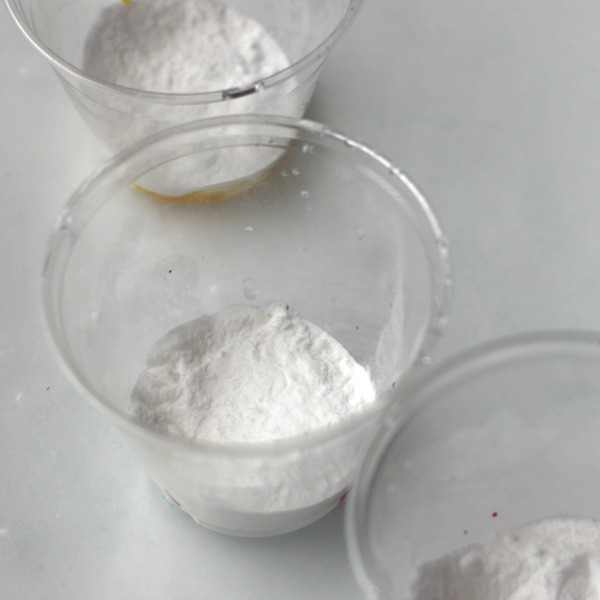
If your kids don’t watch you do the setup of the activity, they won’t know there are colors under the baking soda. It makes for a fun surprise to see what colors will appear.
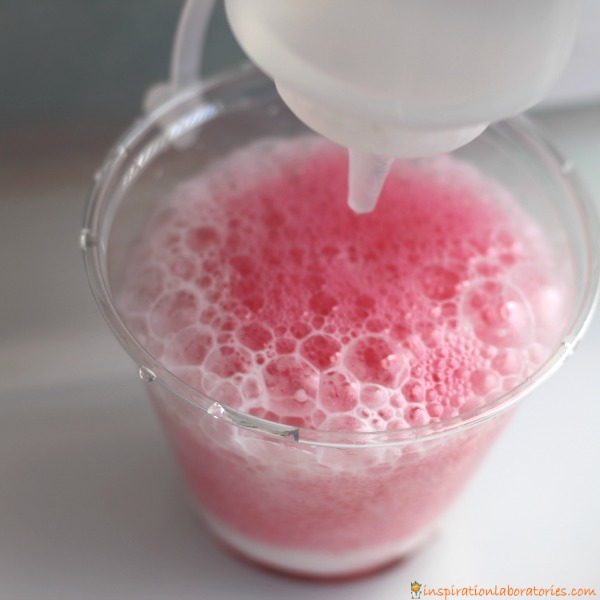
Use a squirt bottle, eye droppers, or spoons to add vinegar to the baking soda. To make the vinegar go farther, you can add water to it. This will decrease the fizziness of the reaction but it will still be fun and can help extend the activity.
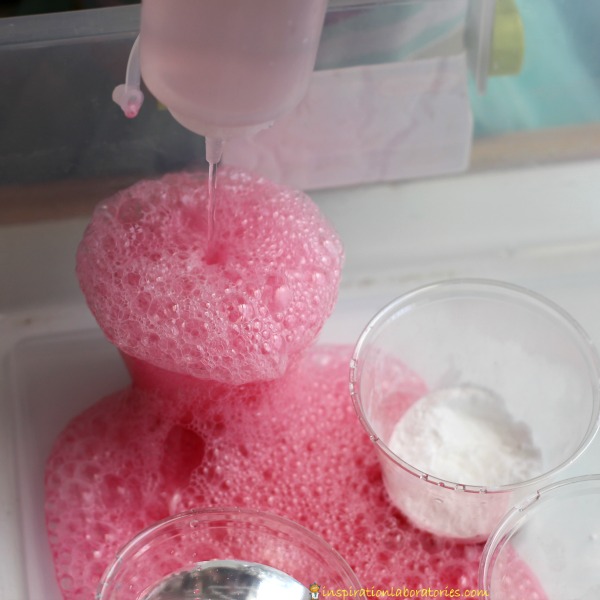
The more vinegar you add, the more bubbles will appear.

If the fizzing stops, you can add more baking soda and see what happens. Will you get more bubbles? Do you need to add more vinegar?
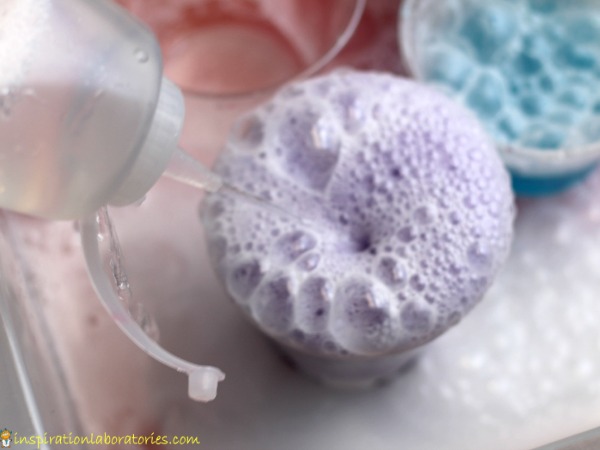
When my kids exhausted their initial supply of baking soda and vinegar, they used eye droppers to mix the colors. What happens when we add red to yellow? Talk about the colors they are using. Talk about the colors that are made. You can also use this opportunity to talk about emotions like in My Many Colored Days. How do the colors make you feel? Do you have a favorite color?
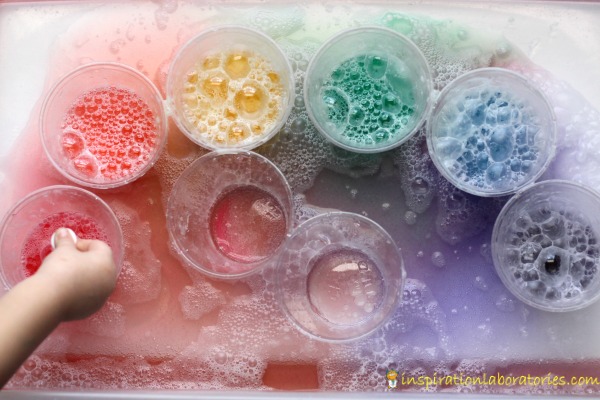
The Science Behind It
Baking soda (sodium bicarbonate) is a base and vinegar (acetic acid) is an acid. When combined, they react to form water, a salt (sodium acetate), and carbon dioxide gas. The bubbles produced by the reaction are the carbon dioxide gas escaping the water.
Color Mixing Experiment Variations
- Set up 3 containers of baking soda each with one visible primary color. Color the vinegar. Allow your child to combine the colored vinegar with the baking soda. What colors do you get?
- Can you use the 3 primary colors to create a rainbow?
- How can we get the color brown?
- What happens if we add soap to the mix? (It will foam up.)
Storybook Science
The first week of our Storybook Science series is all about kitchen science – simple ideas that you can do with everyday household supplies. Follow along with the rest of our Storybook Science here. Bloggers will be sharing a new science idea inspired by a children’s book each day of March.
Subscribe to the Inspiration Laboratories newsletter. Each issue has exclusive hands-on science explorations for children, a recap of our latest activities, and special resources selected just for you!
![]()


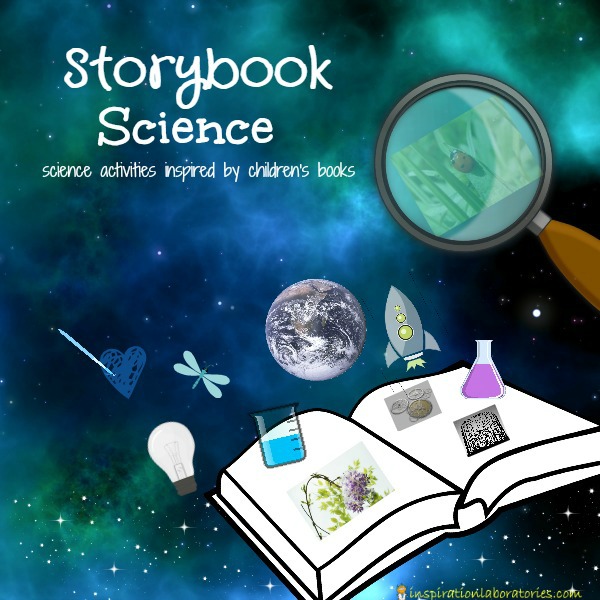
Leave a Reply